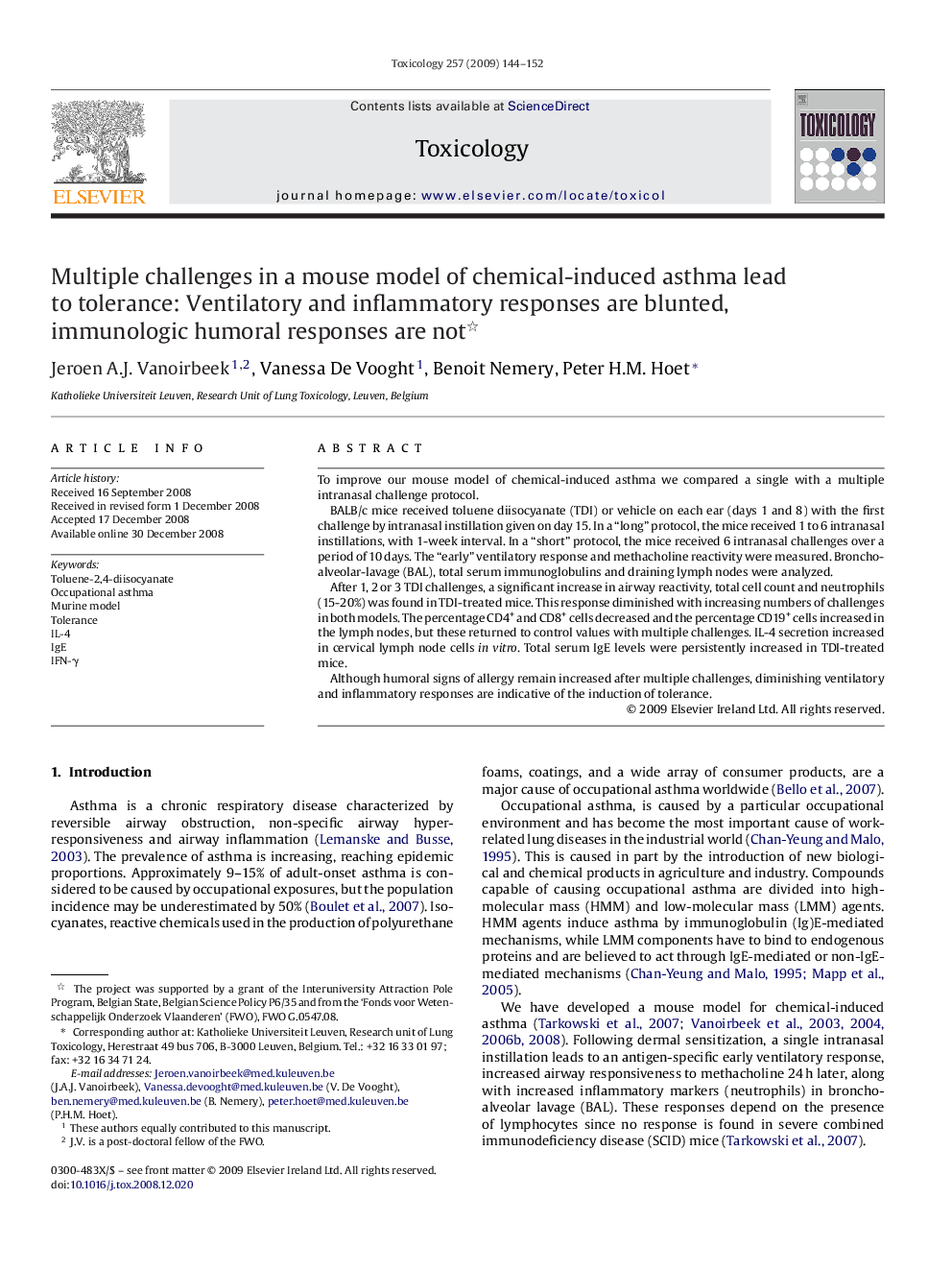| Article ID | Journal | Published Year | Pages | File Type |
|---|---|---|---|---|
| 2596771 | Toxicology | 2009 | 9 Pages |
To improve our mouse model of chemical-induced asthma we compared a single with a multiple intranasal challenge protocol.BALB/c mice received toluene diisocyanate (TDI) or vehicle on each ear (days 1 and 8) with the first challenge by intranasal instillation given on day 15. In a “long” protocol, the mice received 1 to 6 intranasal instillations, with 1-week interval. In a “short” protocol, the mice received 6 intranasal challenges over a period of 10 days. The “early” ventilatory response and methacholine reactivity were measured. Broncho-alveolar-lavage (BAL), total serum immunoglobulins and draining lymph nodes were analyzed.After 1, 2 or 3 TDI challenges, a significant increase in airway reactivity, total cell count and neutrophils (15-20%) was found in TDI-treated mice. This response diminished with increasing numbers of challenges in both models. The percentage CD4+ and CD8+ cells decreased and the percentage CD19+ cells increased in the lymph nodes, but these returned to control values with multiple challenges. IL-4 secretion increased in cervical lymph node cells in vitro. Total serum IgE levels were persistently increased in TDI-treated mice.Although humoral signs of allergy remain increased after multiple challenges, diminishing ventilatory and inflammatory responses are indicative of the induction of tolerance.
